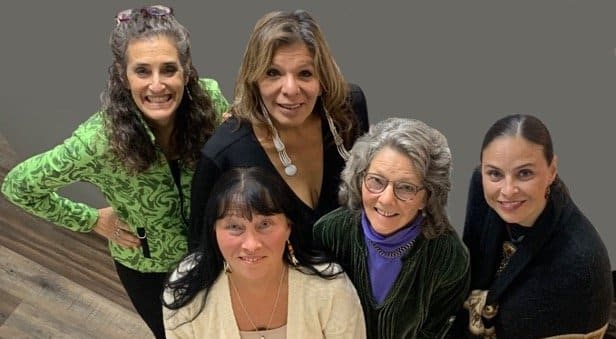A screening of the film Native Women and Allies Speak: What You Weren’t Taught in School, will be hosted virtually by Friends Peace Team on Thursday.
The production is a project of the Coalition of Natives and Allies (CNA), a collaboration of three Indigenous Americans and three non-Natives, designed to forge connections between Native Peoples with supporters, lawmakers, government bodies, school leaders and teachers to nurture understanding and prevent discriminatory acts.
The film features actual experiences of three women from the coalition about boarding schools and internment camps for Native American children, adoptions, and cultural genocide. It also covers the fight to end the use of Native Americans as sports mascots throughout the United States.
Lakota Children In 1869 As They Were Taken To Boarding Schools
“Right now, 27 states in the U.S. make no mention of a single Native American in their K-12 curriculum,” said Arla Patch of CNA. “We took their land, their resources, their lives and then we took their children through boarding schools and adoptions. Perhaps that is just too much for our white privilege to acknowledge.”
Patch questioned if the scarcity of information about Native Americans has fostered “unacknowledged guilt,” enabling convenient denial of the truth.
Prior to European colonization in the early 17th century, Bucks County and the surrounding collar counties were inhabited by the Lenape Delaware, Unami, Munsee and Unalachtigo, along with the Susquehannock, Erie, Shawnee, and Iroquois peoples.
What happened to these tribes? Why and when did they leave? Where did they go? Not many people can answer these questions.
According to a report from the National Congress of American Indians (NCAI), 87% of state history standards for public schools include no mention of Native American history after 1900.
“The United States educational system teaches very little about the Indigenous people and purposely does not teach about the mistreatment or about it’s forced assimilation, forced removals, taking of Native children, forced sterilization, extermination attempts, genocidal policies,” said Donna Fann-Boyle, a Choctaw-Cherokee mother of two boys and member of CNA.Fann-Boyle’s sons attended classes in the Neshaminy School District, and she alerted the school board that using ‘Redskins’ as their sports mascot was a damaging racial slur.
“The township school board has not only continuously avoided dropping the term ‘Redskins,’ but it has spent $425,000 fighting the name change,” reported NBC-Channel 10 in Philadelphia.
Aside from the mythical first Thanksgiving where pilgrims supposedly broke bread with American Indians, there is scant factual information that 18th and 19th Century Native American history is being taught in K-12 classes.
“Native peoples suffered and witnessed the horrors inflicted on them just for trying to protect their families, cultures and homes,” Fann-Boyle said.
“The U.S. teaches about how other country’s governments and leaders enact discriminatory laws, genocidal policies, and extermination attempts on people they view as unsavory, inferior and a problem standing in the way of progress but the U.S. has historically refused to acknowledge its own horrific treatment of Natives in their own homelands,” she added.
“Students, teachers, and congregants were both flabbergasted and upset. No one had told them this before… our mission is to educate and hopefully inspire change,” says the film’s trailer. “This special film is unique in that it shares the lived experiences of both native and non-native peoples who have teamed up to work together.”
The documentary will air virtually on June 6 at 8 p.m. Interested viewers are requested to register for the event and donations would be greatly appreciated.






